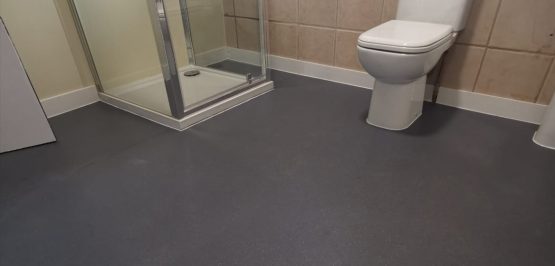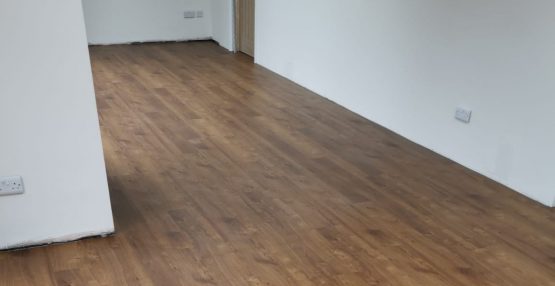What is Lino Flooring?
01
The Evolution of Lino Flooring: From Linoleum to LVT and Beyond
The term "lino" flooring, often used interchangeably with linoleum, vinyl, and luxury vinyl tile (LVT), has a rich history that dates back to the 19th century. Once a staple in homes for its affordability and durability, the evolution of lino flooring has mirrored changes in technology, interior design trends, and growing environmental consciousness. This journey from traditional linoleum to today's innovative flooring solutions reflects not just a change in materials but in our lifestyle and environmental priorities.
The Origins of Linoleum
Linoleum, the original "lino," was invented in the 1860s and became popular due to its durability, ease of cleaning, and the vast range of colours and patterns available. Made from natural ingredients like linseed oil, cork dust, wood flour, and natural resins, linoleum was considered an eco-friendly option even in its early days. It was the go-to flooring for generations, known for its longevity and its ability to withstand heavy foot traffic.
The Vinyl Revolution
As technology advanced, the introduction of vinyl flooring in the mid-20th century marked a significant shift. Vinyl, made from synthetic materials, offered greater versatility in design, including more precise and diverse patterns, and an even more durable surface. However, unlike its predecessor, vinyl's environmental impact became a point of contention due to its petroleum-based composition and more complex recycling processes.


Luxury Vinyl Tile (LVT) Emergence
Enter LVT, a modern iteration of vinyl that combines the practical benefits of traditional vinyl with the aesthetic appeal of natural materials like wood and stone. LVT flooring is known for its high-quality finish, dimensional stability, and the ability to replicate high-end materials at a fraction of the cost. Its multi-layer construction offers enhanced durability and comfort underfoot, making it a popular choice for both residential and commercial spaces.
The Properties That Define Them
Linoleum
Boasts natural antibacterial properties, making it a hygienic choice. It's also comfortable underfoot and can last up to 40 years with proper care.
Vinyl
Offers unmatched water resistance, making it ideal for bathrooms and kitchens. It’s also relatively soft, which provides a comfortable walking surface.
LVT
- Stands out for its realistic visual appeal and texture that mimics natural materials. It's also notably durable and can handle high traffic without significant wear.
Comparative Environmental Benefits
Linoleum continues to be celebrated for its eco-friendly composition and biodegradability. Its natural ingredients contribute to healthier indoor air quality, and its longevity means less frequent replacement and less waste.
Modern vinyl flooring has made strides in environmental responsibility, with manufacturers increasingly recycling materials and reducing harmful additives. However, its synthetic nature still presents challenges in terms of resource use and disposability.
LVT is the newest contender in the eco-friendly arena, LVT manufacturers are innovating with recycled content and more efficient manufacturing processes. While it shares some of vinyl's environmental drawbacks, the durability and low maintenance of LVT can contribute to a lower overall environmental impact over the lifespan of the flooring.

